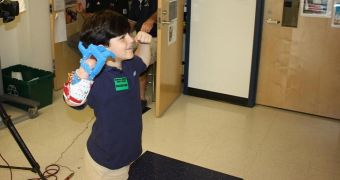Prosthetics is one of the fields of medicine and healthcare that are benefiting the most from the rapid rise of 3D printing technology. The latest success in this area is the new 3D printed hand that a 7-year-old boy got from two of his teachers.
You would probably be unpleasantly surprised if you learned just how many people, old and young, live their lives without the full use of both of their hands. Regardless of whether they were born disabled or were injured beyond healing somehow.
Prosthetics have been around for some time, but the best ones cost thousands of dollars to make, and their upkeep would drain even further money.
Especially when it comes to children, since they grow and, because of that, the prosthetic hand, foot, leg or whole arm has to be adjusted and, in many cases, replaced periodically.
3D printing technology has brought the cost down from fifty thousand bucks to just fifty. This was established when the Cyborg Beast came out, several weeks back.
Since then, we've seen a few more 3D printed hands, and now we've got another to behold and admire, once again produced by volunteers from the e-NABLE group.
In case you didn't know, e-NABLE, as an organization, is responsible for the existence of every 3D printed prosthetic you may have heard of. Its members work directly with disabled people, many of whom are children.
Two teachers from Marshall Simonds Middle School in Burlington, Ma., have been heavily involved with e_NABLE since January.
8th grade science teacher Jourdan E. Marino and 6-8th grade TechED teacher Kevin Kille learned how to use 3D printing technology back then, and wanted to use it for things that made a difference.
The result was that Frankie, the son of a woman named Rachel Grieco, got a prosthetic that can compensate for the fact he was born with a congenital amputation of his right hand. He'd already been asking his mother for one of the 3D printed prosthetic hands that had been covered in the news before, by us and others.
If you're wondering why the hand has only three fingers, it's because the mechanism relies on the strength of the entire arm. The fingers curl in when the elbow is bent. Five fingers meant two more strings, which demanded more strength than Frankie has.
Three fingers were found to demand just the right level of tension. The prosthetic is actually called the Ody Hand, after Odysseus, the kid it was invented for, and who showed that five fingers demanded too much strength for his age.

 14 DAY TRIAL //
14 DAY TRIAL //